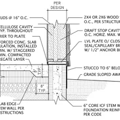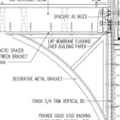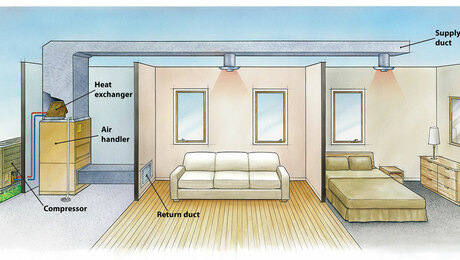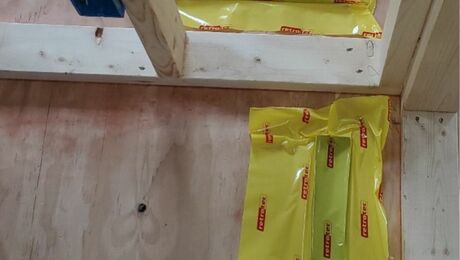Air sealing sill plate while allowing permeability
Have an older home, with the lower level 4′ below grade, zone 5. Currently remodeling, sill plate sits directly on the stem wall (no gasket), which is pretty much at grade level (some grading will occur, but not possible everywhere).
Before I build my interior wall, which will be a challenge, as I need to meet U<0.45, there is vapor barrier on the exterior, and some occasional moisture (no bulk) in the wall. Question is — what’s the best way to air seal the sill plates at the stem wall? Ideally it would be an air sealing material (tape, caulking, foam etc) that is permeable. Are there any recommended air sealing products that are permeable?
GBA Detail Library
A collection of one thousand construction details organized by climate and house part









Replies
Additionally, thinking of applying a wood preservative to the sill plates... any recommendations for a product or concerns with doing that?
No one has any thoughts on this?
Rossi1,
I used Siga Fentrim to air seal the sill to the foundations all. The tape is vapor permeable and sticks to anything and does not need a primer. I recall the only requirements with respect to concrete was that it needs to be clean, dry and the tape needs to lap at least 2" onto the concrete.
Is the vapor barrier on the exterior of the stem wall?
What climate zone?
Dana, he mentioned zone 5 and vapor barrier on the exterior (I assume he probably means damp-proofing? Or possibly poly sheeting on the interior of the exterior wall?).
Rossn1, to answer your question, I can't think of a product better than Siga Fentrim to seal your plate to the foundation, or a reason why it wouldn't work for you, but Dana might have one.
There are other red flags with your proposed plan of action, though. Before you cover up the wall, you should really address the moisture issue. I'm pretty sure you meant to write your insulation requirements as U-0.045, or an average of R-22.2, not U-0.45. Do you have an interior perimeter drain, or can you make one?
I used to have a house with a similar situation, a raised ranch with below-grade living, and persistent mold at the lower portions of the walls. I never dared pull off the wall covering but I'm sure it was nasty back there.
Through the undercaffienated haze I'm slowly remembering the project- it has a foil faced sheathing on the exterior of the framed wall, with a brick veneer(?), and rigid foam is being added on the interior side(?).
I doubt the vapor permeance of the air sealing at the sill much matters here.
All, thanks for your ideas and feedback.
I will definitely check out the Siga Fentrim. Yes, meant U=0.045. No perimeter drain, but now that winter has gone, plan on doing some exterior work with a sealing layer on the exterior of the stem wall, below grade.
Dana, that's generally right, though I more recently sent you a photo that might have not made it to you. When I inspected the shiny faced material, I observed what look to be micro-perforations on the surface of that... maybe a pinhole type looking thing every 1/8" or so.
I won't be doing an interior drain, and don't suspect true bulk water issues; however, over 60 years, there is some efflorescence, so I think it's smart to be thoughtful about how this is built. There is no sill gasket above the stem wall, which could have some dampness, hence the thought about vapor permeability. We were only looking to do 2" of CC foam in the bay for air sealing and to ensure we would not condensate.... face of the sill plate would not be foamed.
About a week ago I demo'd an area that had been remodeled in 2005. They had put a poly layer right behind the drywall, and there were no significant mold issues, so maybe the 'vapor barrier' on the exterior really is an air barrier (with poor seams) but not a vapor barrier.... or, maybe I don't have a practical moisture issue in the wall.
Thanks again, all!